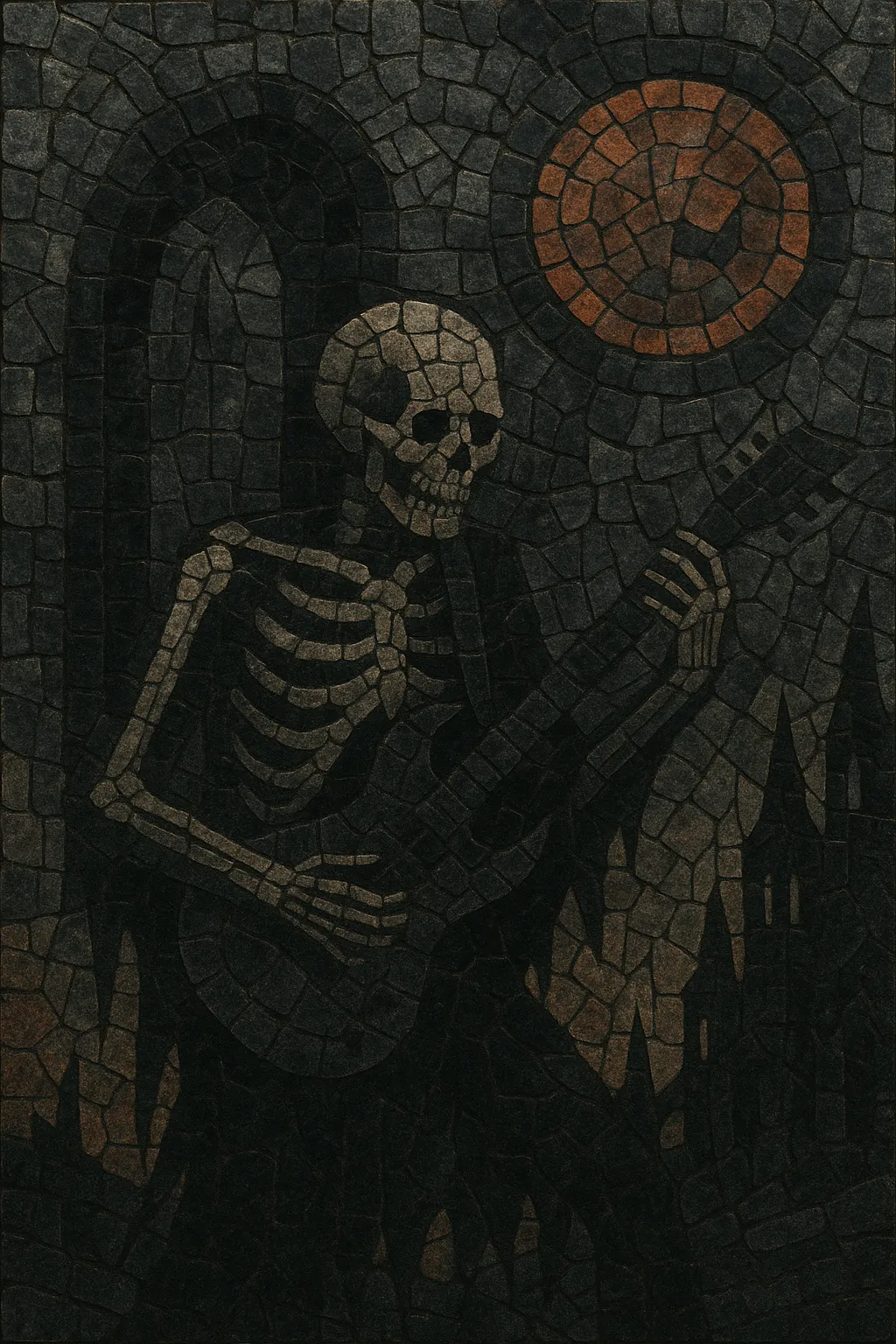Doomcore is a bleak, slow-to-mid‑tempo strain of hardcore techno that emphasizes oppressive atmosphere over sheer speed. It typically sits around 130–160 BPM, coupling pummeling 4/4 kicks with cavernous reverb, long decays, and stark, minor‑key harmonies.
The palette leans industrial: distorted drum machines, metallic hits, drones, tolling synths, and sampled ambience from horror, sci‑fi, and post‑apocalyptic sources. Instead of frenetic breaks, doomcore builds tension through repetition, weight, and space, creating a sense of dread that feels cinematic and ritualistic yet undeniably club-oriented.
Doomcore emerged in the early 1990s from the darker edges of the European hardcore techno underground. In Frankfurt, Germany, the Planet Core Productions (PCP) collective—centered around Marc Acardipane—helped codify a slower, more ominous alternative to gabber’s relentless speed. Releases under aliases such as The Mover, Mescalinum United, Pilldriver, and Rave Creator emphasized monolithic kick drums, dystopian pads, and horror‑tinged sampling, drawing aesthetic inspiration from industrial culture, EBM, dark ambient, and the mood of doom metal.
As gabber accelerated in the Netherlands, doomcore established its own identity by staying slower and heavier. Its tracks favored endurance and atmosphere: sparse arrangements, long decays, and tonal choices that evoked decay and desolation. Labels linked to PCP and like‑minded producers across Germany and the Low Countries circulated 12‑inches that DJs used to reset energy and deepen sets without abandoning intensity.
While mainstream hardcore trends shifted toward faster and brighter sounds, doomcore persisted in specialist circles, popping up on industrial hardcore and underground techno imprints. Producers and netlabels kept the aesthetic alive, and the sound seeped into adjacent scenes where darkness and weight were prized, including some industrial techno floors and experimental nights.
A broader revival of industrial techno and retro‑rave aesthetics renewed interest in doomcore’s foundations. Classic PCP cuts were reappraised, and newer producers adopted the slow, crushing kick plus fog‑shrouded pad formula, sometimes hybridizing it with modern sound design and mastering norms. The genre remains a connoisseur’s niche, but its fingerprints are audible across dark industrial hardcore, certain strands of hard techno, and contemporary industrial techno.
Doomcore proved that heaviness does not require extreme tempo. Its enduring legacy is a vocabulary of pressure, space, and dread—a template many producers still use to inject gravitas into the hardest corners of the club.
Aim for 130–160 BPM. Use a relentless 4/4 kick pattern with long, saturated tails. Let the kick do most of the rhythmic lifting; keep percussion sparse and heavy rather than busy.
Build your foundation from distorted drum machines (e.g., 909/808‑style), overdriven through analog or high‑quality saturation. Layer sub‑bass that follows or reinforces the kick’s fundamental. Add metallic hits, rumbling toms, and industrial foley (machine hum, clanks, wind) to deepen the texture.
Favor minor keys, low register drones, and slow chord movements. Use dissonance (seconds, tritones) sparingly but effectively. Long reverbs, delays, and filtered noise create the signature cavernous space—automate decay times to swell tension across phrases.
Structure in long arcs (8–32 bars) that advance through subtraction and subtle modulation rather than frequent drops. Introduce and remove elements gradually, letting pressure accumulate. Mid‑track breakdowns should reduce to drones and ambience, then return with the kick even heavier.
Curate samples from horror, sci‑fi, newsreels, or found industrial recordings. Process them to sit as distant echoes rather than upfront hooks, reinforcing dread without distracting from the pulse.
Prioritize headroom for the kick‑sub system. Carve space with broad EQ dips around pad fundamentals, and use parallel saturation to add weight without smearing transients. Keep highs controlled; harshness should feel intentional, not fatiguing.
In a DJ/live context, blend doomcore with adjacent industrial techno or dark ambient passages to maintain narrative flow. Use long transitions and key‑matched drones to move between tracks without breaking the tension.


